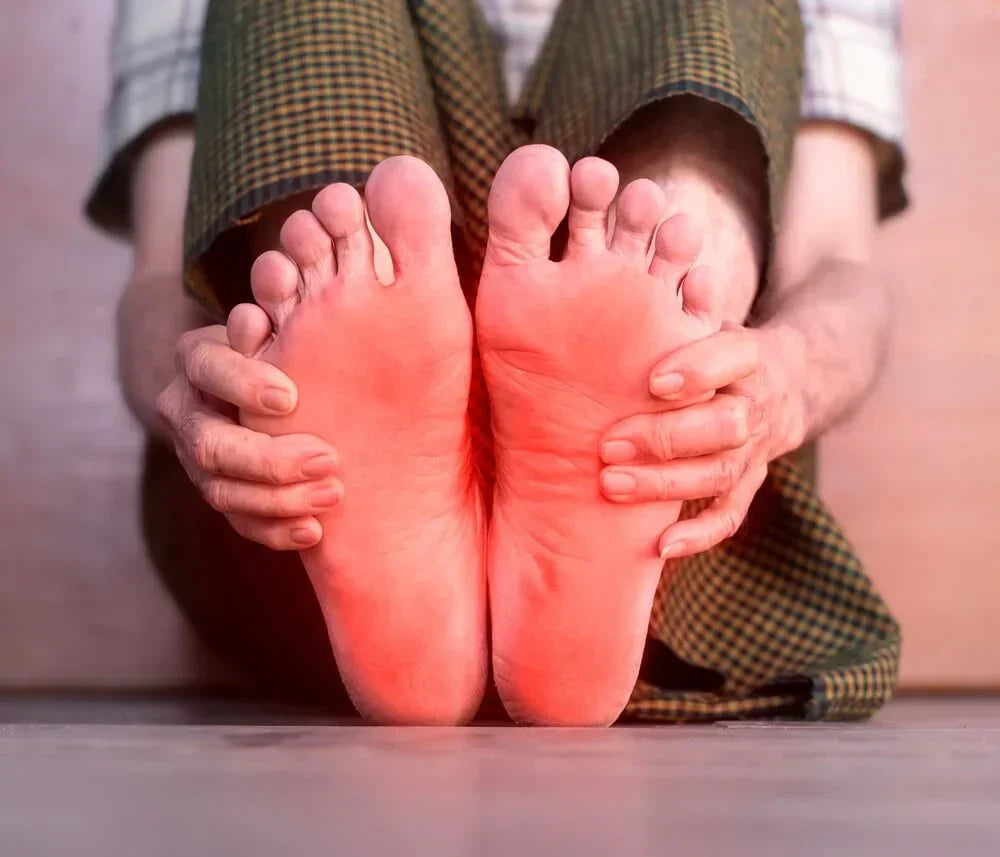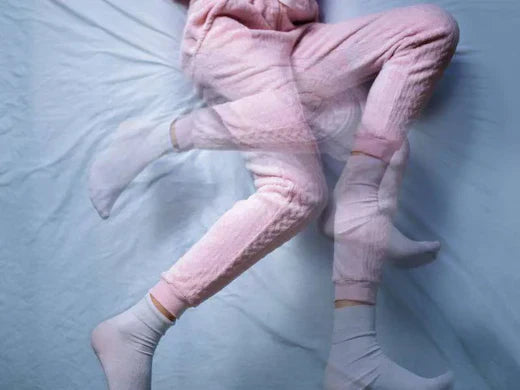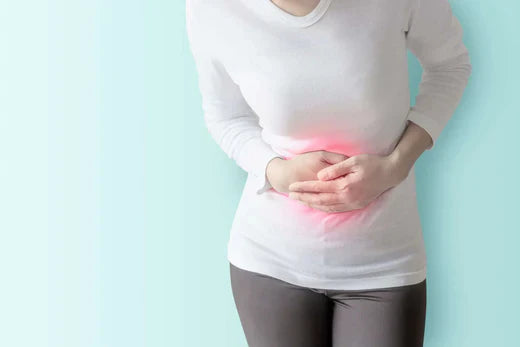Although unpleasant, tingling feet are not usually a cause for concern. However, in some cases, when the discomfort persists or is intense, it may indicate the presence of a major illness. For this reason, we explain the possible causes of this symptom and why it is common in menopause.
What is tingling feet?
Also known as paraesthesia, it is a symptom that can be caused by several factors. It is quite common, so most people have experienced it at some point, and it is usually accompanied by pain or burning (1,2).
What is the origin of this symptom?

Here are the most common causes of tingling feet.
Diseases that often present with tingling feet
This symptom may be one of the first manifestations of an illness. Therefore, if discomfort persists, it is important to consider the following conditions (3,4):
- Kidney failure. In these cases, it is also accompanied by cramps, muscle contractions, and weakness in the legs.
- Autoimmune diseases. These are conditions where the defence system mistakenly attacks components of the body itself. These include lupus, multiple sclerosis, celiac disease, and rheumatoid arthritis.
- Diabetes. Persistently high blood sugar levels cause nerve damage, resulting in diabetic neuropathy (manifested by pain and numbness in the hands, legs, and feet). When the problem progresses, it is associated with dry skin and subsequent lesions or ulcers if left untreated.
- Peripheral arterial disease. This condition decreases blood flow, affecting the supply of oxygen and nutrients to the nerves in the feet. It can manifest with hyperpigmentation, numbness, brittle nails, feeling cold, weakness, and the need to stop when walking a few metres because of pain in the legs.
- Alcoholism. Alcohol has a harmful effect on the nervous system. This causes a condition known as alcoholic neuropathy, which affects up to 66% of chronic drinkers.
Transient causes
These triggers may improve with treatment or by eliminating the causal factor. (3, 5):
- Pinched nerve. A recent back injury or inflammation can press on a nerve, causing tingling feet, muscle pains, and limited movement.
- Toxins. From oral ingestion or absorption through the skin of substances such as arsenic, thallium, mercury and some antifreeze.
- Anxiety. Rapid breathing during crises can alter oxygen and carbon dioxide levels, causing tingling in the hands and feet.
- Deficiency of vitamins E, B1, B6 and B12. These are essential for nerve function, so deficiencies can cause paraesthesia accompanied by dizziness, shortness of breath, fatigue, headache, digestive problems, chest pain, nausea, hair loss and liver enlargement.
- Drugs. The most common are those used to treat cancer, HIV/AIDS, seizures, heart disease and high blood pressure.
Other associated diseases
These include newly developed conditions, such as (3):
- Infections. Especially those that inflame nerves, such as HIV/AIDS, hepatitis B and C, leprosy, herpes, or Lyme disease.
- Stroke. Also known as a stroke. Tingling feet may be one of the first symptoms, followed by numbness or numbness in the face, hands and legs, confusion as well as slurred speech.
Menopause as a cause of tingling feet
During this stage it is possible that the decrease in oestrogen levels may cause the nerves to be affected, resulting in tingling. Although in some cases this symptom disappears on its own when hormone levels stabilise, on other occasions it can persist and cause constant discomfort, even leading to the development of restless legs syndrome (2).
When to see your doctor?
If the symptom persists or you experience any of the following manifestations, you should go immediately to a medical emergency department (2,6):
- Loss of balance and muscle weakness.
- Paralysis.
- Spasms or uncontrollable muscle movements.
- Severe pain.
- Difficulty walking.
- Slurred speech or difficulty pronouncing words.
- Loss of memory.
- Fainting or blackouts.
- Numbness of one region or half of the body.
- Inability to pass stools and urine.
- Impaired vision.
Practical tips to relieve or prevent tingling feet
It is essential to identify the cause of the symptoms and follow medical advice. In addition, there are changes in habits that can help to reduce discomfort, especially if they are related to changes in the menopause (2,7):
- Improve your diet. Eat unsaturated fats found in fish, avocado, and olive oil. Include a variety of fruits and vegetables, probiotics, and prebiotics.
- Reduce consumption of refined carbohydrates and added sugar.
- Exercise regularly. It improves circulation, heart function and reduces stress.
- Take care of the quality of your night's rest. It is well known that sleep disorders increase this discomfort. So try to get at least 8 hours of continuous, quality sleep each night.
- Maintain adequate hydration. At least 8 cups a day, more if you do vigorous exercise.
- Avoid alcohol, tobacco and caffeine.
In short, it is not advisable to ignore tingling feet or any other bodily manifestations. Remember to consult your doctor before starting any treatment and take these recommendations into account. Stay informed with our content where you can learn from basic topics such as, what is muscle mass, to the causes and treatment of menopausal symptoms. Take control and choose to live well!
Bibliographical references
- Verywell Health. Tingling in Feet: Causes, Diagnosis, and Treatment
. 2023 . Available from: https://www.verywellhealth.com/tingling-in-feet-5214417
- HealthNews. Ways to Treat Tingling Sensation in Hands and Feet During Menopause.
. 2023 . Available from: https://healthnews.com/womens-health/menopause/ways-to-treat-tingling-sensation-in-hands-and-feet-during-menopause/
- Burgess L. What could cause tingling in the feet or hands?
. Medicalnewstoday.com. Medical News Today; 2023 . Available from: https://www.medicalnewstoday.com/articles/321423#takeaway-and-visiting-a-doctor
- Kraft S. Peripheral artery disease: Symptoms, causes, and more
. Medical News Today; 2023 . Available from: https://www.medicalnewstoday.com/articles/188939#PAD_symptoms
- Almohanna H, Ahmed A, Tsatalis J, Tosti A. The Role of Vitamins and Minerals in Hair Loss: A Review. Dermatology and therapy
. 2019 ; 9(1):51–70. Available from: https://www.ncbi.nlm.nih.gov/pmc/articles/PMC6380979/
- NHS Choices. Overview - Peripheral neuropathy
. 2022 . Available from: https://www.nhs.uk/conditions/peripheral-neuropathy/
- BDCT. Neuropathy and feet
. . Available from: https://www.bdct.nhs.uk/neuropathy-and-feet/
You May Also Like

JOIN US AND GET 10% OFF
Sign up to our newsletter to access free resources, advice and support.















